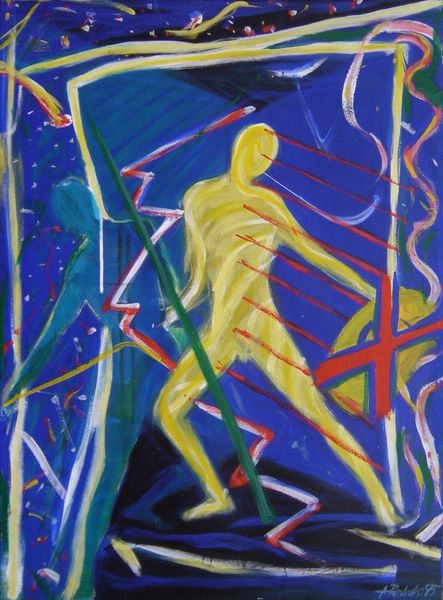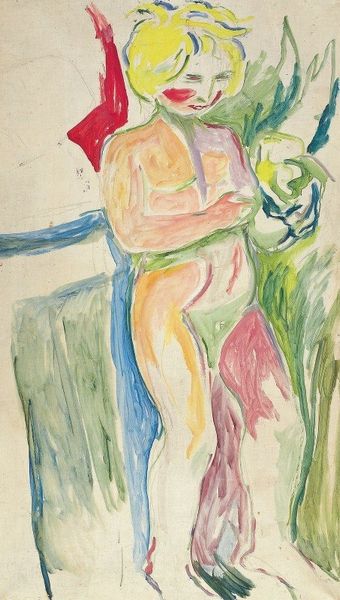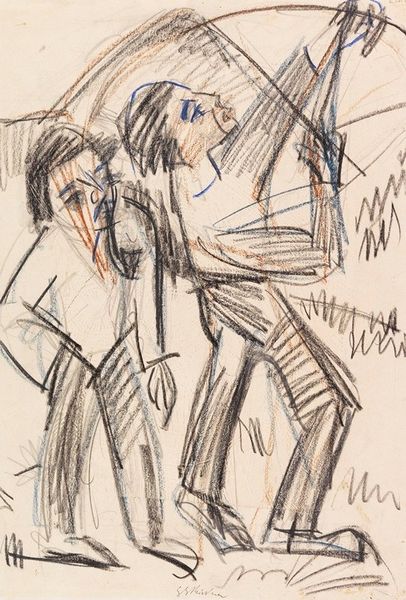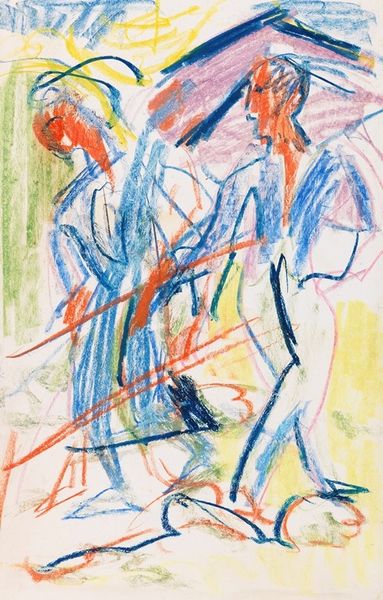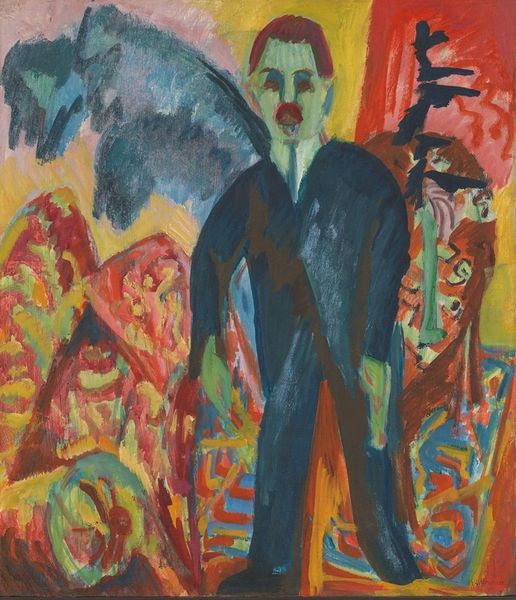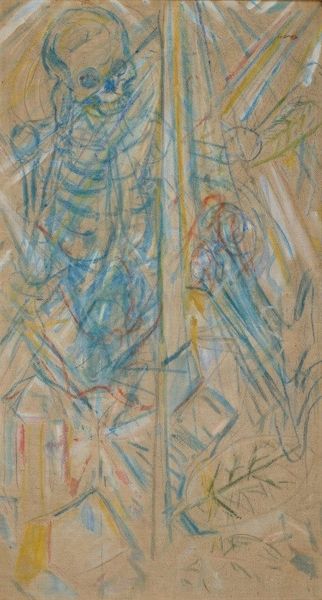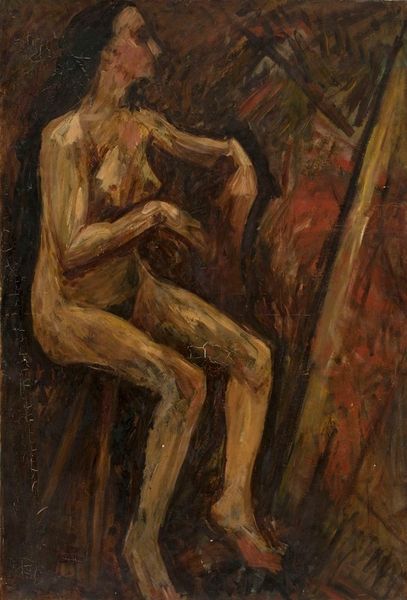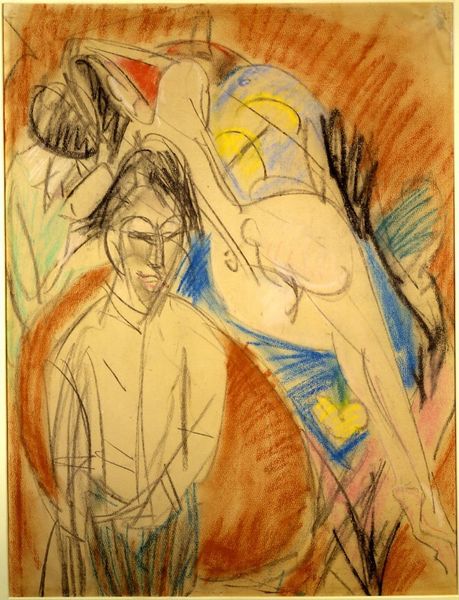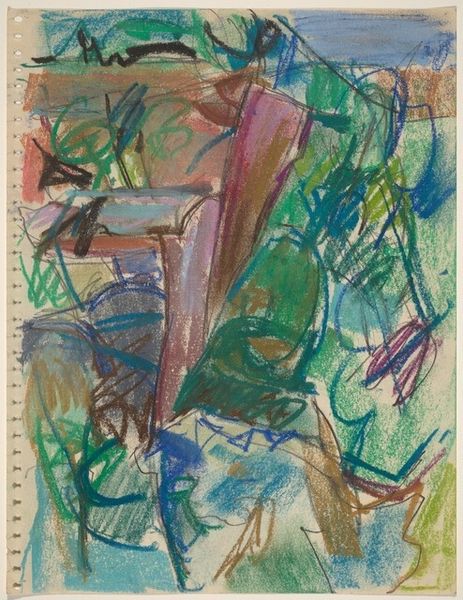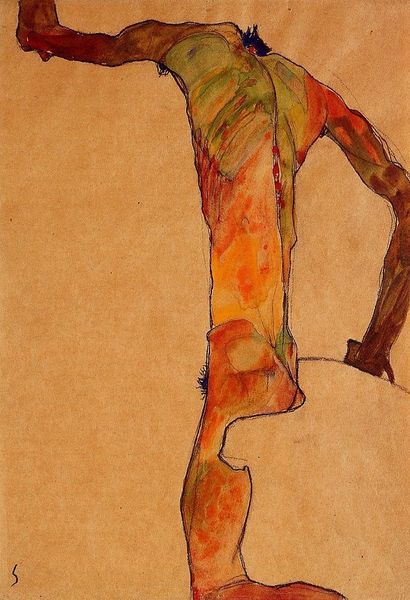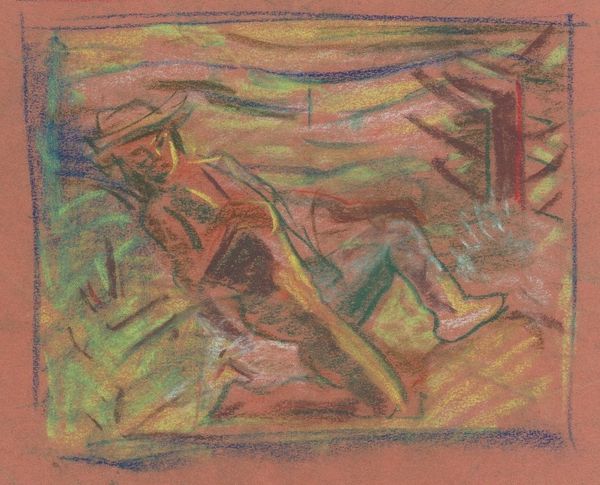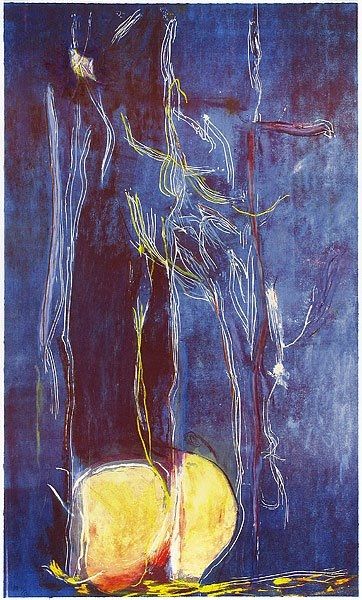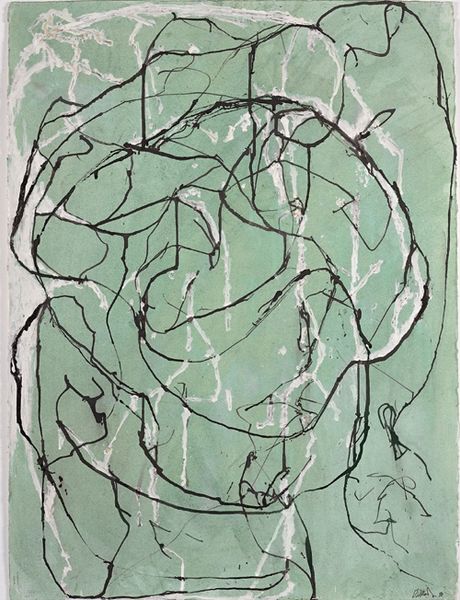
drawing, coloured-pencil
#
portrait
#
drawing
#
abstract expressionism
#
coloured-pencil
#
figuration
#
expressionism
#
line
Copyright: Public Domain: Artvee
Curator: Here we have "Mannsakt," a drawing from 1915 by Edvard Munch rendered in colored pencil. At first glance, what strikes you? Editor: The rawness, the exposed vulnerability. It's barely there, this figure, a suggestion of form more than a defined being. It makes me feel unsettled. Curator: Absolutely. Considering the historical context, Munch created this around the time of World War I. Can that unsettling feeling be related to this tragic event, or what's your opinion? Editor: I do think so. This fragmented portrayal, with its ghostly figure outlined in vibrant but anxious strokes, mirrors the shattering of social structures and individual psyches that came about after it. The figure has lost his power, becoming weak in comparison with society. Curator: Yes, and we see his influence of expressionism reflected in the rejection of traditional artistic values. Munch critiqued what art and museums were doing at the time by displaying images like this, creating debate within culture. Editor: Precisely, Munch's raw honesty makes this much more than a study of form. He understood how the external world—the trauma, the fear—shaped our inner landscape, which leads us to an image charged with the pathos of a changing society, so charged with this, and a desire for understanding its impact and relation to this man. Curator: Looking at the symbolism of color—the juxtaposition of red, green, and yellow—and its intensity gives a sense of anxiety. A more subtle approach may evoke a passive reflection. Editor: Yes, those colors really speak. This isn’t just an objective observation; it's a subjective, psychological space where the universal experience of anxiety and change gets to be captured, I'd say. Curator: It has been an interesting piece to reflect on as we consider how it's a piece created within a changing society with influence through history, both for Munch, and for us here in the present. Editor: I couldn't agree more. The marks left by an external struggle will live inside until death. Hopefully society heals.
Comments
No comments
Be the first to comment and join the conversation on the ultimate creative platform.
